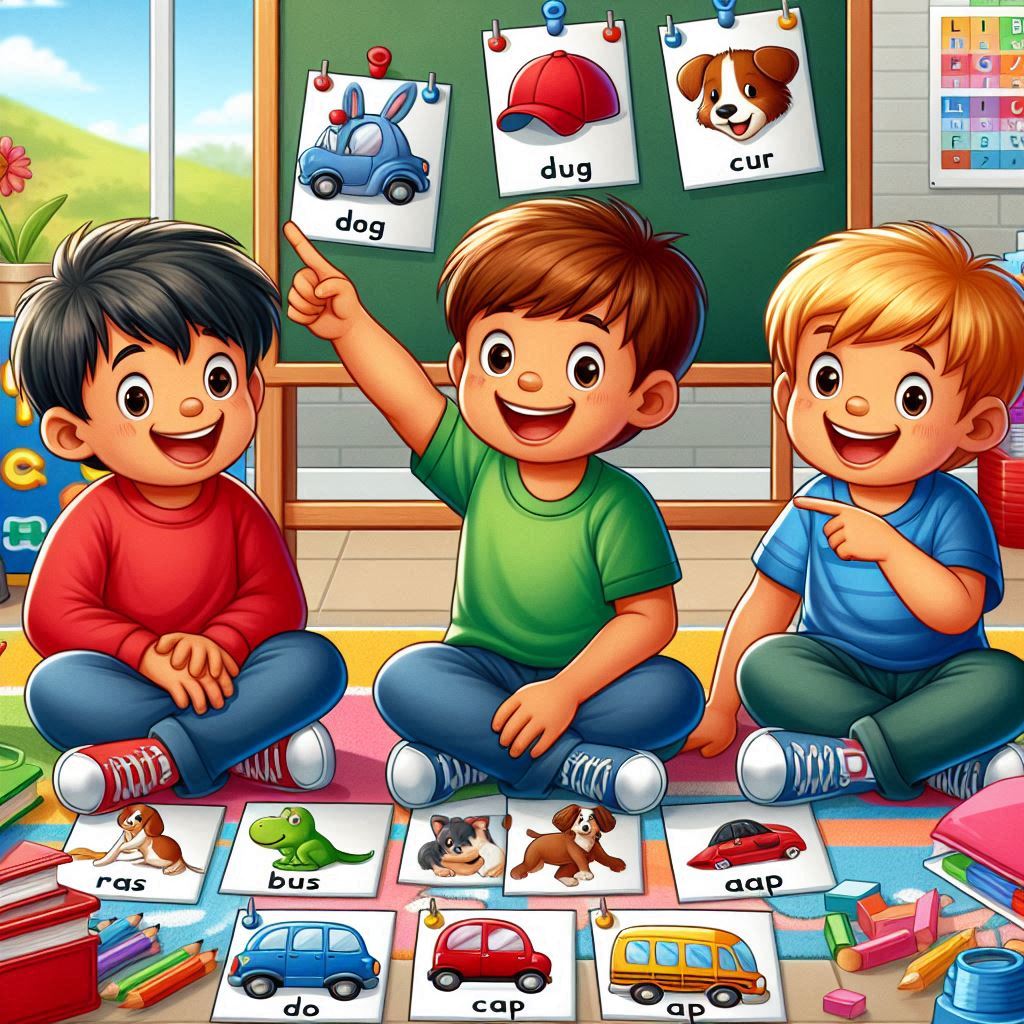Fun with Ending Sounds

Discovering the Power of Ending Sounds
Ending sounds are a vital part of phonics and early literacy development. By learning how words end, children improve their ability to differentiate between similar words, enhance their vocabulary, and build stronger spelling skills. The "Fun with Ending Sounds" worksheet introduces this concept in a lighthearted and engaging way — using images, activities, and games that make learning exciting and memorable.
What Makes This Worksheet Special?
Unlike traditional drills, this worksheet invites children into a playful learning experience. Whether they’re matching images, coloring based on final sounds, or playing interactive games, kids are encouraged to explore and experiment with sounds like “g”, “t”, “m”, and “n”. The activities are designed to be simple but effective — making it easy for both teachers and parents to use at home or in class.
Learning Benefits of the Worksheet
Here’s how the worksheet supports early literacy:
- Develops Auditory Discrimination: Kids learn to identify the final sound in spoken words, sharpening their listening skills.
- Improves Spelling and Writing: Recognizing how words sound at the end helps in spelling them accurately.
- Builds Vocabulary Confidence: As children master endings, they begin using new words with confidence.
- Strengthens Phonics Skills: A foundation in phonics prepares kids for more advanced reading tasks.
- Encourages Participation: Fun activities keep children engaged and excited to learn more.
How to Use This Worksheet Effectively
Follow these simple steps for best results:
Step 1: Start with Sound Practice
Begin by saying a few simple words out loud like “dog”, “cap”, or “pan”. Ask the child to listen closely to the last sound. Use flashcards or picture prompts to keep it visual and interactive.
Step 2: Match Sounds to Pictures
The worksheet may show a picture of a "dog" and give three letter options: “g”, “b”, and “n”. The child picks the correct ending sound and either circles or colors it.
Step 3: Use Color-Coding
Assign a color to each ending letter. For example, “g” = green, “t” = blue. Children then color the picture using the correct color based on the ending sound, turning learning into art!
Step 4: Play “Sound Detective”
Hide word cards around the room and ask children to find a card and tell you the last sound. This can be turned into a team activity or a timed challenge to boost excitement.
Step 5: Celebrate Success
Once completed, discuss their answers and praise their effort. Encourage children to share new words they know that end in similar sounds — this builds connection and creativity.
Creative Reinforcement Activities
- Sound Coloring Pages: Let kids color pictures based on their ending sounds using a key. Great for both fun and fine motor skills.
- Music and Rhymes: Sing songs that emphasize ending sounds or use rhyming verses that help them recognize patterns.
- Sound Jump Game: Say a word aloud and let kids jump onto a mat with the correct ending letter.
- Letter Box Sort: Create small boxes labeled with letters like “d”, “m”, “n” and let kids drop word cards into the matching boxes.
Example Words to Explore
- Dog → ends with “g”
- Cap → ends with “p”
- Pan → ends with “n”
- Mat → ends with “t”
- Drum → ends with “m”
- Bell → ends with “l”
The Role of Ending Sounds in Phonics Mastery
Mastering ending sounds is not just about one skill — it’s part of the bigger journey of reading and comprehension. From spelling to pronunciation, this small but powerful skill lays the groundwork for fluent reading and clearer communication. Worksheets like this turn what could be boring drills into joyful learning moments.
Conclusion
The "Fun with Ending Sounds" worksheet transforms learning into an enjoyable and creative experience. Through interactive exercises, visual games, and storytelling, children gain essential skills while staying engaged. It’s a perfect tool for parents and teachers looking to boost phonics in a fun and lasting way.